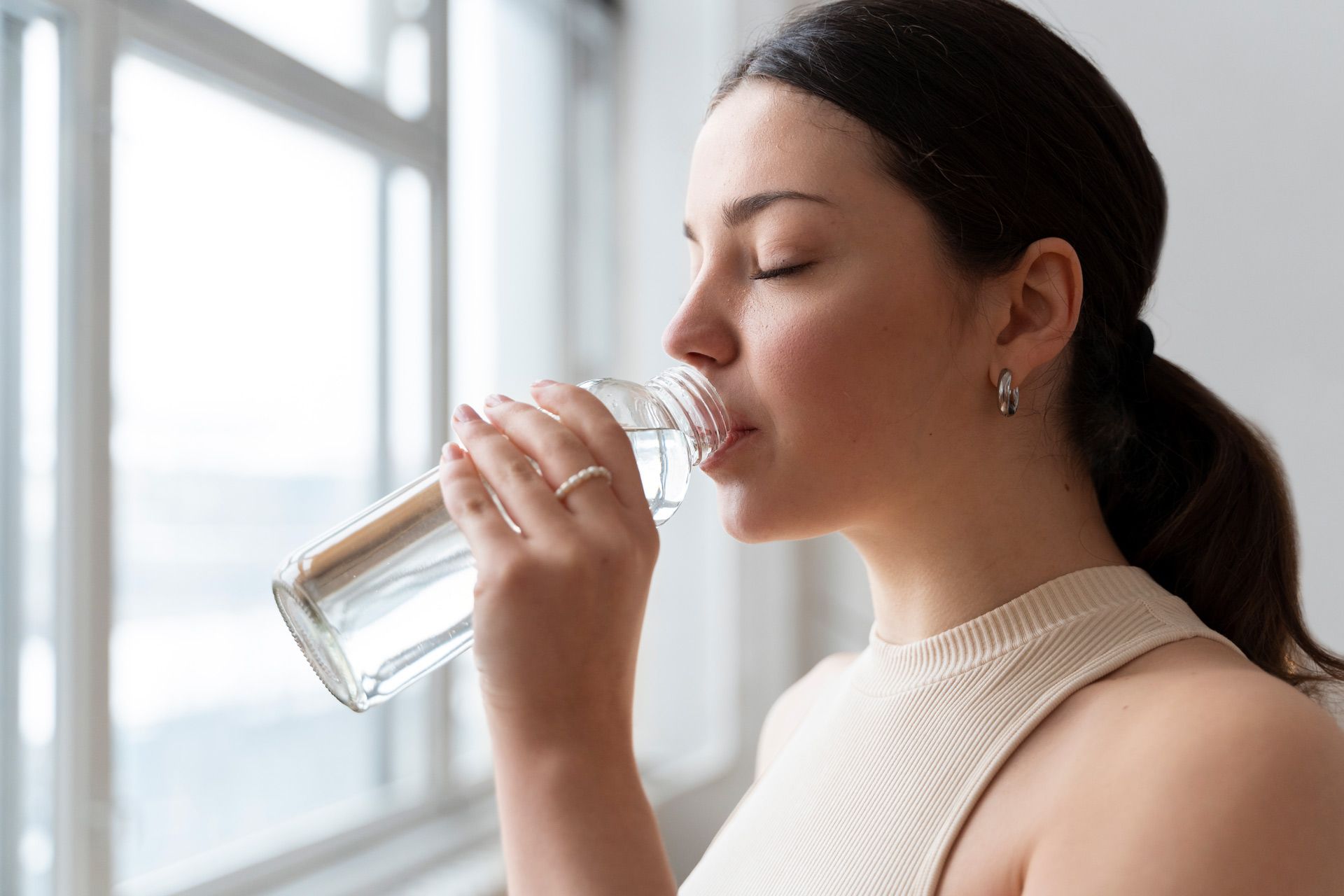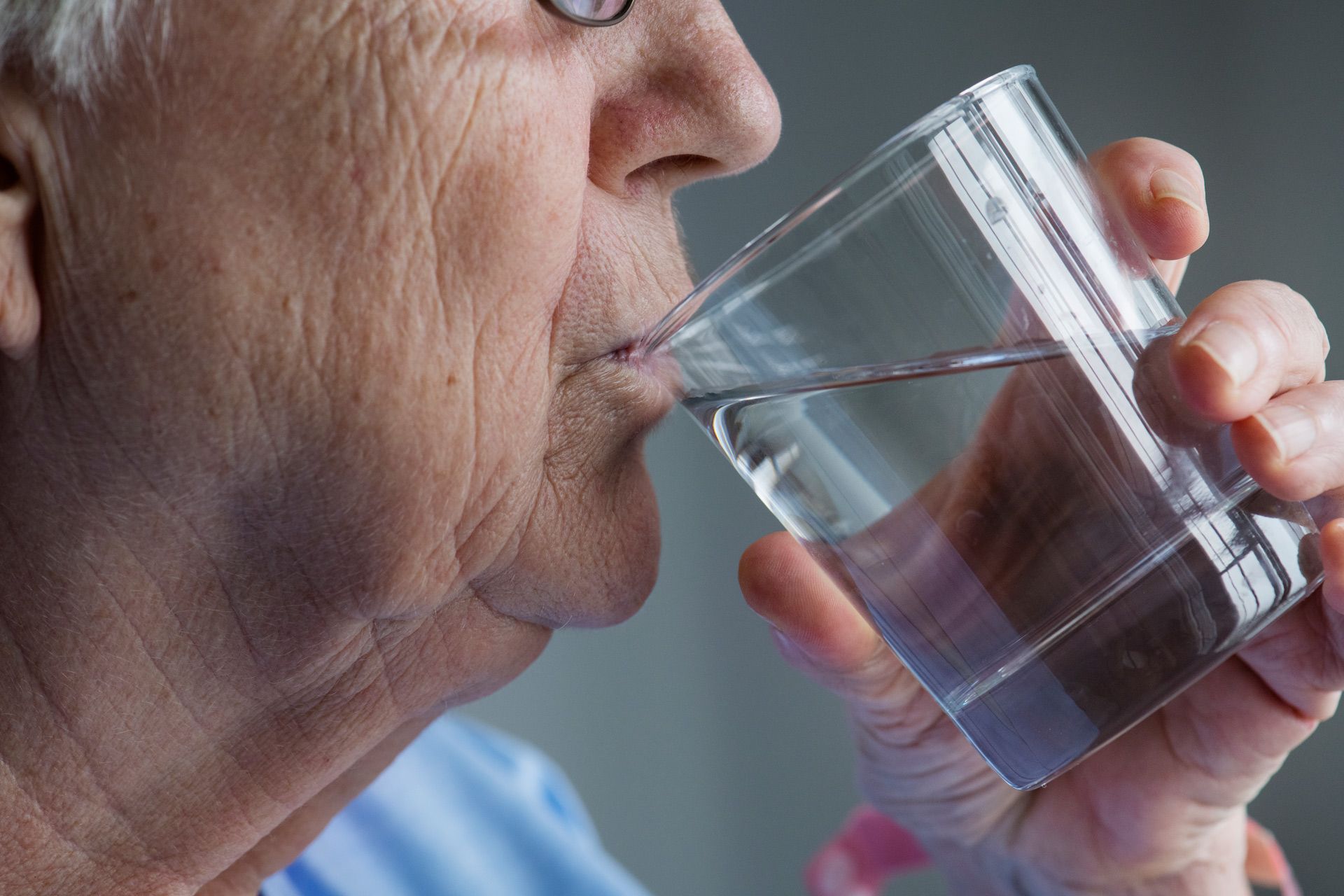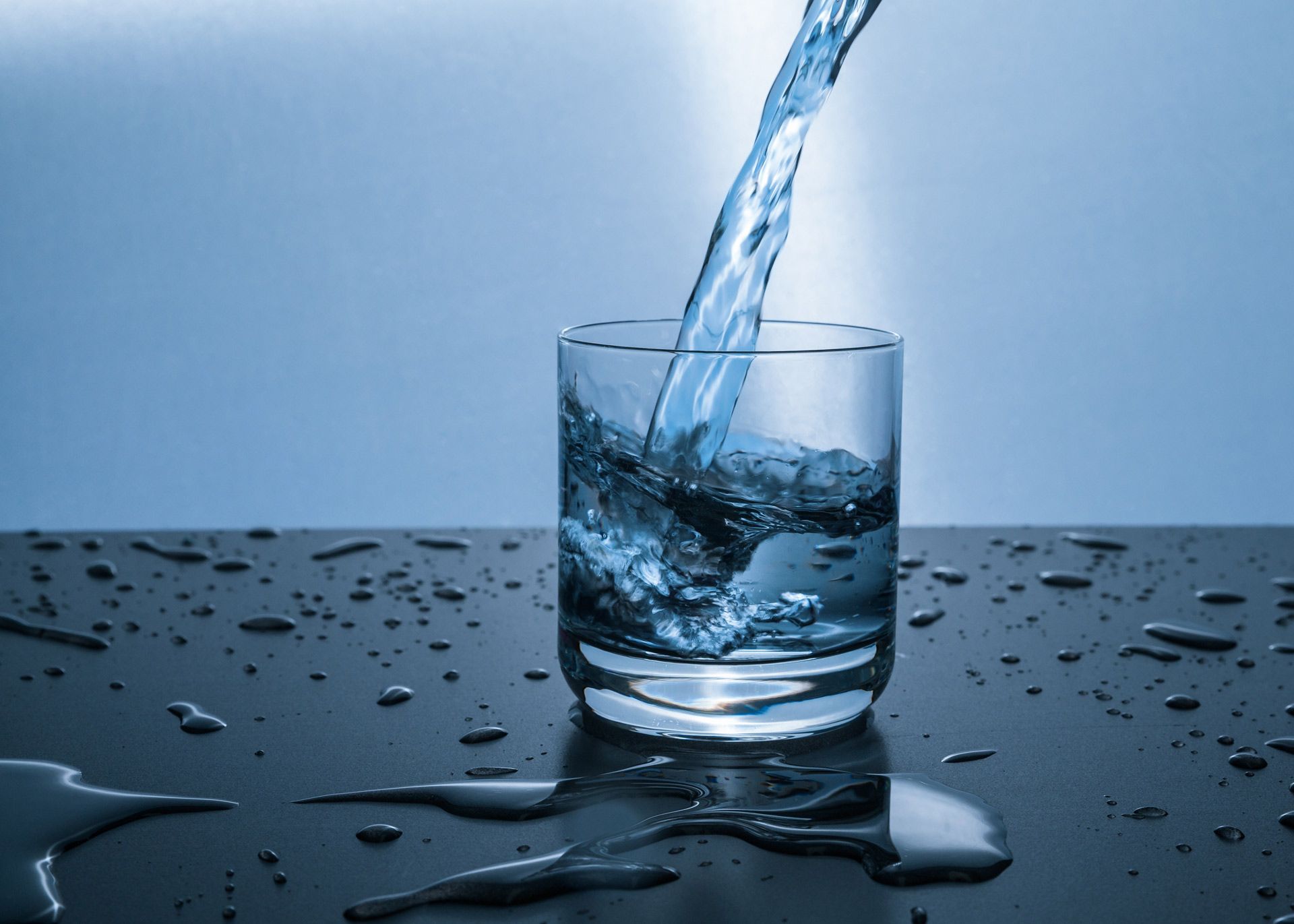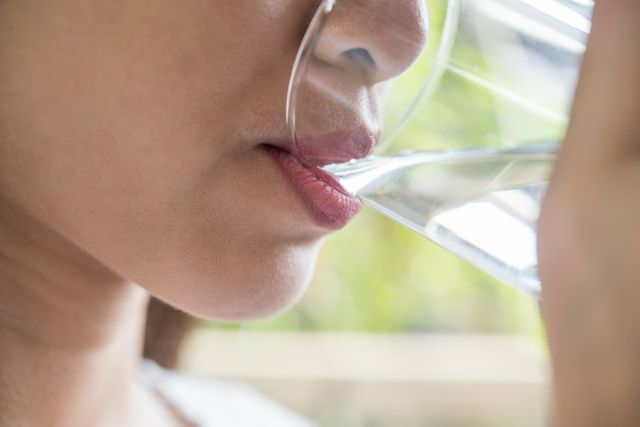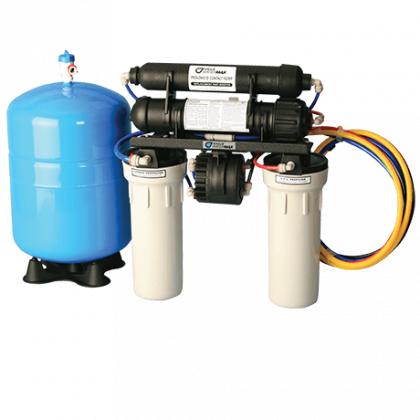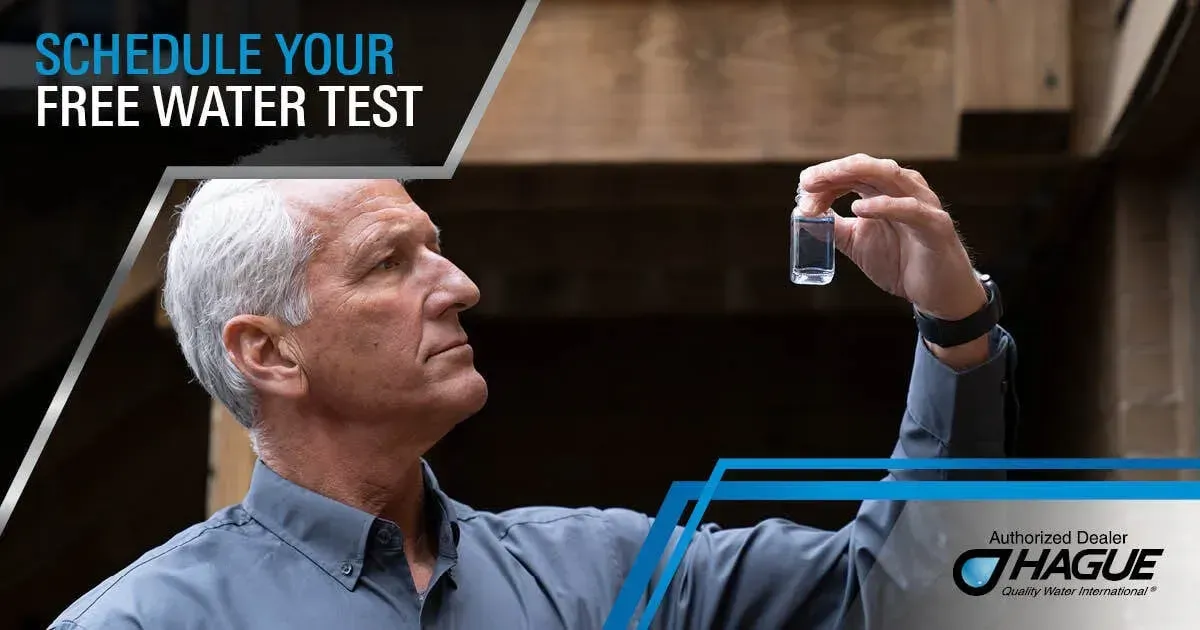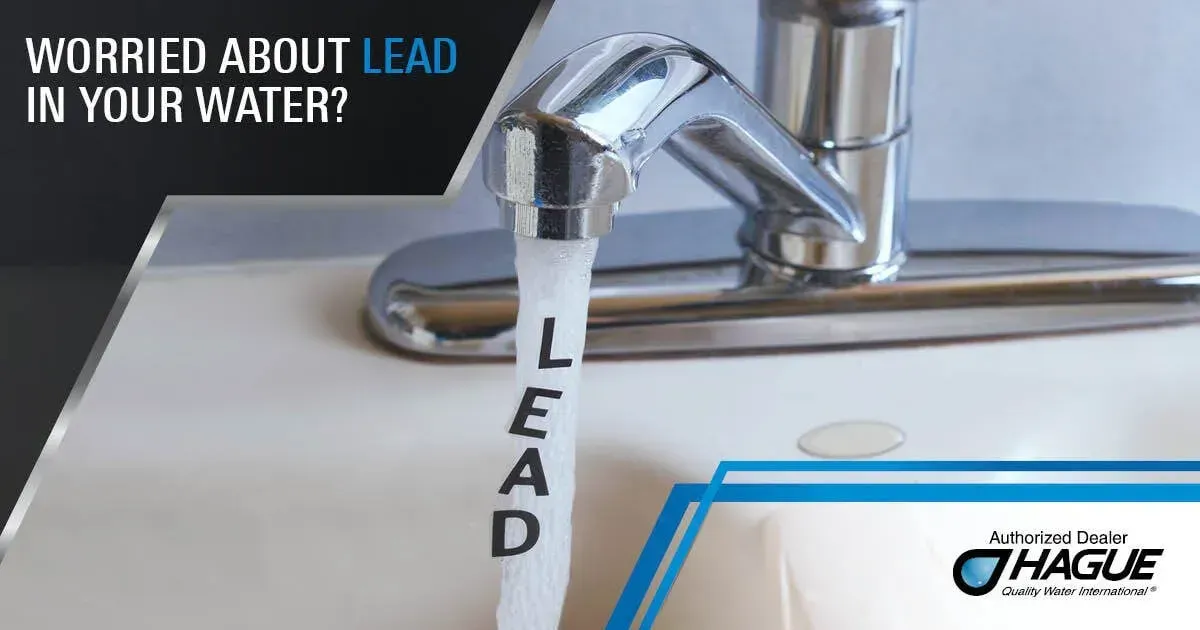Home Water Filtration System Cost
October 9, 2024

Installing a whole-house water filtration system can make a big difference in your home’s water quality, but it’s important to understand the costs involved. Whether you’re looking for a basic setup or a system that targets specific water issues like hard water or bacteria, this guide will walk you through everything. We'll cover what you can expect to spend, how to install it, and any additional costs you should keep in mind. By the end, you’ll know exactly what to look for to get the right system for your home and budget.
What is the Cost of a Whole-House Water Filtration System?
The cost of a whole-house water filtration system depends on the type you choose and your water needs. On average, you might spend $1,000 to $4,000 for the system itself. Basic models that handle things like sediment and chlorine usually start around $1,000. These work well if your water quality isn’t too bad and just needs a bit of filtering.
If your home has more serious water issues, like hard water, high iron levels, or bacteria, advanced systems are a better fit. These options often include multi-stage filtering, reverse osmosis, or water softening features, and they typically cost between $2,500 and $4,000.
Remember, installation costs are separate. Professional installation can range from $500 to $1,500, depending on your location and system complexity. Some people choose the DIY route to save money, but keep in mind that professional work often includes warranties and ensures proper setup.
Factors Influencing Whole-House Water Filtration System Cost
Several factors influence the cost of a whole-house water filtration system. Here’s what you should consider:
- Type of System: The type of system you choose directly impacts the price. Basic systems like
carbon filters are usually more affordable, while advanced options like
reverse osmosis or
UV filters come at a higher price due to their ability to remove specific contaminants.
- Water Quality Issues: The condition of your water affects the system you’ll need. If your water has high levels of
minerals, bacteria, or sediment, you may require a multi-stage filtration system, which is generally more expensive.
- System Capacity: Larger homes or properties with higher water usage need systems that can handle more volume. A high-capacity system can filter larger amounts of water but costs more than a standard one.
- Brand and Features: The brand you choose and any extra features, like
smart monitoring or
automatic flushing systems, will also play a role in pricing. Higher-end brands usually provide more reliable performance but at a premium cost.
- Installation Method: Professional installation ensures everything is set up correctly and may include a warranty. It does add to the total cost, though. DIY installation can save money, but it requires time, effort, and some plumbing skills.
These factors combined determine the final price, so it’s essential to balance your budget with your water needs to find the right solution.
Breaking Down the Cost of a Water Filtration System
When breaking down the cost of a water filtration system, it helps to look at the different components and services involved. Here’s what you’re paying for:
- Filtration Unit Cost: This is the main part of your expense. Basic units like carbon filters start around
$1,000, while advanced systems, such as reverse osmosis or UV filters, can reach up to
$4,000. The price varies based on the technology used and the level of filtration provided.
- Installation Cost: If you hire a professional, expect to pay between
$500 and $1,500. The cost depends on your area, the complexity of the installation, and any plumbing modifications needed. DIY installations are cheaper, but keep in mind the extra time and tools you might need.
- Pre-Filtration and Post-Filtration Equipment: In some cases, you might need additional equipment like
water softeners or
sediment pre-filters. These units can add
$300 to $1,200 to your total.
- Replacement Filters: Filtration systems require regular maintenance, including changing filters. Depending on your system, replacement filters may cost anywhere from
$50 to $400 per year. Advanced systems with multi-stage filters tend to have higher maintenance costs.
- Water Testing Kits: To determine your water quality before installation, you might need a testing kit, which usually costs around
$20 to $200. A professional water test, however, can cost more but offers a detailed analysis.
By understanding these costs, you can plan and budget for the right system without surprises down the line.
Comparing Water Filtration Costs Across Different Systems
Different water filtration systems come with varying price tags based on their features and the type of filtration they offer. Here’s a quick comparison:
- Carbon Filtration Systems: These are among the most affordable, usually costing between
$1,000 and $2,500. They work well for basic water issues like removing chlorine, odors, and improving taste. However, they aren’t ideal for removing heavy metals or bacteria.
- Reverse Osmosis Systems: These systems are mid-range, with prices ranging from
$2,500 to $4,000. Reverse osmosis is effective for removing contaminants like
lead, nitrates, and fluoride, but they require more maintenance and filter replacements.
- UV Water Purification Systems: UV systems are excellent for eliminating bacteria and viruses. They typically cost
$1,500 to $3,000, making them a good option if you’re dealing with biological contaminants. However, they often need to be paired with other filtration methods to remove sediment and chemicals.
- Water Softening Systems: These are designed to tackle hard water issues and usually fall between
$1,000 and $3,500. They don’t remove other contaminants, so they are often combined with additional filtration units for comprehensive water treatment.
- Multi-Stage Filtration Systems: These systems combine various technologies like carbon, UV, and reverse osmosis to tackle multiple contaminants. They’re the most comprehensive but also the most expensive, with prices ranging from
$3,000 to $6,000.
Choosing the right system depends on your water quality and budget. Each system has its pros and cons, so it’s important to find one that fits your needs and offers good long-term value.
How to Install a Whole-House Water Filtration System?
Installing a whole-house water filtration system can seem like a big project, but breaking it down into steps helps simplify the process.
Steps to Install a Water Filtration System in Your Home
Installing a water filtration system at home follows a clear process. Here’s a step-by-step guide:
- Gather Your Tools and Materials: You’ll need basic plumbing tools like a pipe cutter, adjustable wrench, and plumber’s tape. Make sure you also have the fittings, connectors, and filtration unit ready.
- Shut Off the Water Supply: Locate your main water valve and turn it off. This step is crucial to avoid flooding or leaks while you’re working.
- Choose the Installation Spot: The best spot is where the main water line enters your home, typically in a basement or utility area. Make sure it’s accessible for future filter changes or maintenance.
- Cut the Main Water Line: Using the pipe cutter, carefully cut the main water line where the system will connect. Be ready to place a bucket underneath to catch any residual water.
- Attach the System’s Inlet and Outlet Connections: Attach the inlet side of the filter to the incoming water pipe and the outlet to the pipe that directs water into your home. Use fittings, plumber’s tape, and sealant to create a secure, leak-free connection.
- Install the Bypass Valve (if applicable): If your system includes a bypass valve, connect it now. This valve lets you bypass the filtration system during maintenance without shutting off the water supply to your home.
- Mount the Filtration Unit: Secure the unit to the wall or floor as per the manufacturer’s instructions. Make sure it’s stable and properly aligned.
- Turn the Water Back On and Check for Leaks: Slowly turn the water back on and inspect all connections for leaks. Tighten any fittings if needed.
- Flush the System: Run water through the system for several minutes to clear out any debris from installation. This step also helps ensure the filter is working correctly.
- Test the Water Quality: Finally, test your water using a kit or professional service to confirm that the filtration system is effective. This verification step is important to make sure you’re getting the quality of water you expect.
This process is straightforward, but if you run into complications, a professional plumber can ensure everything is installed correctly and efficiently.
DIY Vs Professional Water Filter Installation
When deciding how to install your whole-house water filtration system, you have two main options: DIY installation or hiring a professional. Each choice has its pros and cons, depending on your comfort level with plumbing and your budget.
DIY Installation
Pros:
- Cost Savings: Installing the system yourself can save you a significant amount of money, as professional labor costs range from
$500 to $1,500.
- Flexibility: You can install the system at your own pace and make adjustments as needed without scheduling around a contractor.
Cons:
- Skill Requirement: Installing a whole-house system requires basic plumbing knowledge. Mistakes like improper connections can lead to leaks or water damage.
- Time-Consuming: DIY installations take time, especially if you need to learn as you go or troubleshoot issues along the way.
- No Warranty: Professional installations often come with warranties, giving you peace of mind that the work is covered if something goes wrong.
Professional Installation
Pros:
- Guaranteed Quality: Professionals know how to set up the system correctly and ensure everything is connected properly. They also conduct leak tests and check the system’s function before leaving.
- Warranties: Many companies offer warranties on professional installations, covering repairs if issues arise due to faulty installation.
- Time Efficiency: Professionals can typically complete the installation quickly, saving you the hassle of a lengthy DIY project.
Cons:
- Higher Cost: Professional installation adds $500 to $1,500 to your overall expense, depending on the complexity of the job and your location.
- Scheduling: You’ll need to coordinate with a contractor’s schedule, which can sometimes delay the installation process.
Choosing between DIY and professional installation depends on your budget, time availability, and confidence in handling plumbing tasks. If you’re comfortable with tools and want to save money, DIY could be the right choice. However, if you prefer guaranteed results and peace of mind, professional installation is a solid investment.
Estimating Installation Cost for Homeowners
The cost of installing a whole-house water filtration system can vary based on whether you choose to do it yourself or hire a professional. Let’s break down what you can expect for each option:
DIY Installation Costs
Basic Equipment and Tools: If you already have basic plumbing tools, your DIY costs will mainly include purchasing the necessary fittings, connectors, and sealants. This might add up to around
$50 to $200.
Additional Costs: If you don’t have tools like a pipe cutter or adjustable wrench, you’ll need to purchase them, which could add another
$50 to $100.
Total DIY Cost: For most homeowners, DIY installation will range from
$50 to $300, depending on the tools and materials required.
Professional Installation Costs
Standard Installation: Hiring a professional usually costs between
$500 and $1,000. This price covers the labor for setting up the system, making pipe connections, and testing for leaks. It’s the standard rate for simple installations that don’t require major modifications.
Complex Installations: If your water filtration system needs to be installed in a difficult-to-access location or requires significant plumbing modifications, the cost may go up to
$1,500 or more. This higher rate often applies to larger homes or those with unique plumbing setups.
Additional Services: Some professionals offer extra services like
water testing, which might cost an additional
$100 to $200 but ensures your system is functioning correctly from the start.
In summary, DIY installation is the most budget-friendly option, costing as little as $50 if you have the tools. On the other hand, professional installation provides peace of mind and guarantees proper setup, but it comes at a higher price.
What are the Best Whole-House Water Filtration Systems for Your Needs?
Choosing the best whole-house water filtration system depends on your home’s water quality and what you’re looking to achieve. Not all systems are the same, so understanding the options and their benefits helps you pick the right one.
Choosing the Right Type of System for Your Home
Selecting the right water filtration system for your home involves understanding your specific water needs and the capabilities of different systems. Here’s how to make the best choice:
- Test Your Water Quality: Before choosing a system, start with a
water test. You can either use a home testing kit or hire a professional service. This step helps identify contaminants like
chlorine, lead, bacteria, nitrates, or
hard water minerals. Knowing what’s in your water will guide you in selecting the right type of filtration.
- Consider Your Water Source: If your home uses
well water, you may need a system that addresses bacteria and sediment issues, such as a
UV filter paired with a sediment filter. If you’re on a
municipal supply, a
carbon filtration system might be enough to handle chlorine and chemical residues.
- Budget and Maintenance: Think about how much you’re willing to spend upfront and long-term. Basic carbon systems are affordable and low-maintenance, while
reverse osmosis or
multi-stage systems cost more and require regular filter changes. Make sure you choose a system that fits your budget not just for installation but for upkeep as well.
- Home Size and Water Usage: Larger homes or those with high water usage need a system that can handle the volume without losing efficiency. Check the capacity and flow rate of each system to ensure it matches your household’s needs.
- Future-Proofing Your System: If you plan to add features later, such as a water softener, choose a filtration system that’s compatible with upgrades. Some systems are designed to be part of a larger setup, allowing you to build a comprehensive water treatment solution over time.
By matching your home’s water needs with the right system features, you can make an informed decision that ensures clean, safe water for years to come.
Understanding Different Filtration Methods
When choosing a whole-house water filtration system, it’s important to understand the different filtration methods available. Each method targets specific contaminants and suits different water quality needs. Here’s a breakdown:
Activated Carbon Filtration
How It Works: Carbon filters trap impurities like chlorine, volatile organic compounds (VOCs), and pesticides. They improve the taste and smell of water by removing chemicals and odors.
Best For: Homes with municipal water supplies looking for basic filtration and improved taste. It’s effective but doesn’t remove heavy metals or bacteria.
Reverse Osmosis (RO)
How It Works: RO systems push water through a semi-permeable membrane, removing contaminants like lead, fluoride, nitrates, and even bacteria. It provides high-quality, purified water.
Best For: Households with serious water quality issues or those looking for near-pure water. RO systems are comprehensive but require regular maintenance and filter replacements.
UV (Ultraviolet) Filtration
How It Works: UV systems use ultraviolet light to destroy bacteria, viruses, and other microorganisms. It’s a chemical-free way to disinfect water but doesn’t remove chemicals or sediment.
Best For: Homes using well water or those at risk for biological contamination. It’s a powerful method for killing harmful pathogens but often needs to be paired with other filters.
Water Softeners (Ion Exchange)
How It Works: These systems replace hard minerals like calcium and magnesium with sodium ions, softening the water. They prevent scale buildup in pipes and appliances, extending their lifespan.
Best For: Homes with hard water that causes mineral buildup. Water softeners are great for improving plumbing efficiency but don’t filter out other contaminants.
Multi-Stage Filtration Systems
How It Works: These combine multiple methods like carbon, RO, and UV in one system, tackling a wide range of contaminants in one go. They provide the most comprehensive water treatment.
Best For: Homes dealing with various water issues, such as heavy metals, bacteria, and chemicals. These systems are effective but are also the most expensive and require more maintenance.
Understanding how each method works helps you choose the best option based on your water test results and home needs. Pairing the right methods ensures that your water is as clean and safe as possible.
Benefits of Using a Whole-House Water Filtration System
Investing in a whole-house water filtration system brings several benefits, making it a worthwhile addition to any home. Here are the key advantages:
Improved Water Quality
A whole-house filtration system removes contaminants like chlorine, sediment, heavy metals, and bacteria, ensuring clean water throughout your home. This means safer drinking water, cleaner showers, and better-quality water for cooking.
Health Benefits
Filtering out harmful chemicals and microorganisms reduces the risk of skin irritation, respiratory issues, and other health concerns linked to contaminated water. It’s especially beneficial for homes with children or individuals with compromised immune systems.
Protects Plumbing and Appliances
Hard water and sediment can cause buildup in pipes, water heaters, and other appliances, leading to costly repairs. A filtration system helps extend the lifespan of your plumbing and appliances by preventing scale and residue buildup.
Better Tasting and Smelling Water
Whole-house systems, particularly carbon filters, remove unpleasant tastes and odors caused by chlorine, sulfur, or other chemicals. The result is water that’s not only safe but also more enjoyable to drink and use.
Convenient and Comprehensive Solution
Unlike point-of-use filters that only treat water at specific taps, a whole-house system ensures that all the water coming into your home is filtered. This means you get clean water from every faucet, shower, and appliance without the need for multiple devices.
Long-Term Savings
While the upfront cost of a whole-house system may be higher, it can save you money over time. By protecting your plumbing, reducing appliance wear, and minimizing the need for bottled water, the system offers both financial and environmental benefits.
Overall, a whole-house water filtration system not only enhances water quality but also adds value to your home by safeguarding health and prolonging the life of plumbing systems.
Are There Additional Costs Associated with Home Water Filtration?
Yes, there are a few additional costs beyond the initial purchase and installation of a whole-house water filtration system. These expenses are important to consider when planning your budget, as they impact the long-term cost of owning and maintaining the system.
Maintenance Costs for a Whole-House Filtration System
Maintaining a whole-house water filtration system involves routine costs that homeowners should plan for to keep their system functioning efficiently. Here’s what you can expect:
Regular Filter Replacements
The most common maintenance task is changing filters. Basic carbon filters usually need replacement every 6 to 12 months, costing around $50 to $100 per filter. Systems with multiple filters, like reverse osmosis or multi-stage systems, might require different filters at varying intervals, which can total $150 to $400 annually.
Cleaning and System Checkups
Some systems, especially those using UV or RO technology, need periodic cleaning to remove mineral buildup or other debris. Homeowners can often do this themselves with cleaning kits, costing about $20 to $50, or opt for professional services that range from $100 to $200 per visit. Routine checkups help catch potential issues early and keep the system running smoothly.
UV Bulb Replacements
If you have a UV filtration component, the UV bulb typically needs replacement once a year to maintain its effectiveness. These bulbs can cost between $50 and $150 depending on the brand and model.
Water Softener Salt (if applicable)
Systems that include water softeners require regular salt refills to keep the softening process effective. Homeowners usually spend around $100 to $150 per year on salt, depending on their water hardness and usage.
Professional Maintenance Services
For those who prefer not to handle maintenance themselves, professional services are available. Many companies offer annual packages that include filter changes, cleaning, and a system inspection for $150 to $300 per year. These services ensure the system stays in peak condition without you having to manage the upkeep.
Factoring these costs into your annual budget helps maintain your water filtration system efficiently, preventing bigger repair issues and ensuring you always have high-quality water.
Long-Term Savings from Installing a Whole-House Water Filtration System
While the upfront and maintenance costs of a whole-house water filtration system can seem significant, it’s important to look at the potential long-term savings. Here’s how installing a system can actually save you money over time:
Reduced Need for Bottled Water
One of the biggest benefits is cutting down or completely eliminating the need for bottled water. If a family spends around $50 to $100 per month on bottled water, that adds up to $600 to $1,200 annually. A whole-house system provides clean, drinkable water from every tap, significantly reducing these costs.
Lower Plumbing and Appliance Maintenance Costs
Hard water and sediment can cause buildup in pipes, water heaters, and appliances, leading to frequent repairs and replacements. By filtering out these elements, a whole-house system helps extend the life of your plumbing and appliances, saving you money on repairs that could range from $100 to $1,000 per fix.
Energy Efficiency Gains
Water heaters and other appliances run more efficiently with filtered water, as they don’t have to work as hard to heat or process water that’s full of minerals or sediment. This efficiency can lead to a noticeable reduction in your energy bills over time.
Health-Related Savings
Using a whole-house system reduces exposure to contaminants that could lead to health issues, such as skin irritation, digestive problems, or respiratory concerns. Lowering these risks may result in fewer doctor visits and less money spent on medical treatments related to water-borne issues.
Reduced Appliance Replacements
Hard water can damage dishwashers, washing machines, and coffee makers, leading to premature replacements. With a filtration system, these appliances tend to last longer, allowing you to avoid replacement costs that could range from $300 to $1,500 for major appliances.
Fewer Cleaning Products Needed
Filtered water reduces the amount of soap scum and mineral deposits on surfaces, making it easier to clean showers, sinks, and fixtures. This can lower your spending on cleaning products over time.
By investing in a whole-house water filtration system, you’re not only improving water quality but also creating opportunities for long-term savings in various aspects of home maintenance and daily expenses.
Potential Filter Costs Over Time
The ongoing cost of filters is a key consideration when investing in a whole-house water filtration system. Different types of systems come with varying filter replacement schedules and costs, so it’s essential to know what to expect. Here’s a breakdown:
Carbon Filters
These are the most common and affordable filters, typically used in basic whole-house systems. They need replacement every 6 to 12 months and usually cost between $50 and $100 per filter. Over time, this adds up to an annual expense of $100 to $200, depending on the frequency of replacement.
Sediment Filters
Sediment filters are often used in combination with other filtration methods, especially in homes with well water. These filters trap larger particles and prevent clogging in other parts of the system. They usually need replacement every 6 months, costing around $20 to $40 each. This results in a yearly cost of $40 to $80.
Reverse Osmosis (RO) Filters
RO systems have multiple stages, each with its own filter that may need replacing at different intervals. The pre-filters (sediment and carbon) typically last 6 to 12 months, while the RO membrane may last 2 to 3 years. Individual filter costs range from $30 to $100, and the RO membrane itself can cost $100 to $200. Over time, maintaining an RO system could cost $150 to $400 per year.
UV Bulbs
UV systems use bulbs that need to be replaced approximately once a year to maintain their effectiveness. These bulbs usually cost between $50 and $150, depending on the brand and model.
Multi-Stage Systems
Multi-stage systems combine various filter types, so costs can add up. For example, a system might have carbon, sediment, and RO filters, plus a UV component. The combined replacement cost for these filters can be $200 to $500 annually, depending on the frequency and type of filters used.
Water Softener Salt
If your system includes a water softener, you’ll also need to budget for water softener salt. This typically costs about $10 to $20 per bag, with an annual cost of around $100 to $150, depending on usage.
Being aware of these ongoing filter costs allows you to budget effectively and maintain the system for optimal performance. Investing in a high-quality system upfront can sometimes reduce long-term maintenance costs.
How Does Water Quality Affect the Choice of Filtration Systems?
Water quality plays a major role in determining which whole-house filtration system is best for your home. Knowing what’s in your water supply helps you choose the right system to address specific issues and contaminants.
Conducting a Water Test Before Installation
Before installing a whole-house water filtration system, it’s essential to conduct a water test. Testing your water helps identify specific contaminants and water quality issues, guiding you in selecting the right system for your needs. Here’s how you can go about it:
Choose a Water Testing Method
Home Testing Kits: You can purchase a home testing kit at a local store or online. These kits are affordable, usually costing between $20 and $50, and can quickly check for common issues like pH levels, chlorine, hardness, and bacteria. While they’re convenient, home kits may not provide detailed results for specific contaminants like heavy metals.
Professional Laboratory Testing: For a comprehensive analysis, consider sending a sample to a professional lab. This option costs more, typically ranging from $50 to $200, but offers detailed insights into contaminants such as lead, nitrates, pesticides, and volatile organic compounds (VOCs). This method is ideal if you suspect serious water quality issues or if you’re using well water.
Collect the Water Sample
For accurate results, collect the sample directly from your main water source, such as the kitchen sink or another frequently used tap. Make sure to follow the kit or lab instructions carefully to avoid contamination during collection.
Analyze the Results
Once you have the results, look for key indicators like pH balance, chlorine levels, hardness, and the presence of contaminants like iron, lead, or bacteria. Understanding these factors will help you determine what type of filtration system is necessary.
Consult a Professional (Optional)
If the test results show high levels of specific contaminants or if you’re unsure about the best filtration solution, consulting a water treatment professional can help. They can recommend the most suitable system based on your water quality and provide additional guidance on installation.
Choose a System Based on the Test Results
Use the data from your test to match your needs with the right filtration technology. For example, if your water has high chlorine levels, a carbon filtration system is suitable. If bacteria are present, a UV system would be more effective.
Conducting a water test ensures that you select the most effective filtration system for your home, targeting the specific issues present in your water supply.
Dealing with Contaminants in the Water Supply
Identifying and addressing contaminants in your water supply is critical for selecting the right whole-house water filtration system. Different contaminants require specific filtration methods, so understanding what’s present in your water will guide you in choosing the most effective solution. Here’s how to deal with common contaminants:
Chlorine and Chemical Residues
Solution: If your water supply comes from a municipal source, it likely contains chlorine, which is used for disinfection. High levels of chlorine can cause unpleasant odors and tastes, as well as skin irritation.
Recommended Filtration: A carbon filtration system is effective at removing chlorine and other chemical residues. These filters improve water taste and odor, making them ideal for households using city water.
Hard Water (Calcium and Magnesium)
Solution: Hard water, common in many regions, contains high levels of calcium and magnesium, which can cause scale buildup in pipes and appliances. This can lead to decreased efficiency and costly repairs.
Recommended Filtration: A water softener uses ion exchange to remove these minerals, softening the water and preventing scale. For homes with both hard water and chemical issues, pairing a softener with a carbon filter offers a comprehensive solution.
Bacteria and Viruses
Solution: Well water or untreated sources can harbor bacteria and viruses that pose health risks. If your water test reveals biological contamination, it’s essential to treat these microorganisms effectively.
Recommended Filtration: UV filtration systems use ultraviolet light to kill bacteria, viruses, and other microorganisms without adding chemicals to the water. UV filters are often combined with other systems like carbon or sediment filters to ensure comprehensive protection.
Heavy Metals (Lead, Iron, Arsenic)
Solution: Heavy metals like lead, iron, and arsenic are harmful and may be present in both municipal and well water supplies. These contaminants can lead to serious health issues if not properly filtered.
Recommended Filtration: A reverse osmosis (RO) system is highly effective for removing heavy metals. It forces water through a semi-permeable membrane that traps contaminants, providing near-pure water. If iron is a significant problem, a dedicated iron filter may be necessary before the RO system.
Nitrates and Pesticides
Solution: Agricultural runoff can introduce nitrates and pesticides into water supplies, especially in rural areas. These chemicals are hazardous, particularly to children and pregnant women.
Recommended Filtration: Reverse osmosis systems are also effective in filtering out nitrates and pesticides. For additional chemical filtration, an activated carbon filter can be used alongside the RO system.
By identifying the contaminants in your water and choosing the appropriate filtration system, you can ensure your home’s water supply is safe, clean, and suitable for all uses.
Using a Chemical Injector Water Treatment System for Specific Needs
For homes dealing with specific and stubborn water quality issues, like high levels of iron, sulfur, or bacteria, a chemical injector water treatment system may be the most effective solution. This system injects precise amounts of chemicals into the water supply to neutralize contaminants. Here’s how it works and when it’s needed:
How Chemical Injector Systems Work
These systems use a pump to inject a chemical solution into the water line. Common chemicals include chlorine (for disinfection), potassium permanganate (for iron and manganese removal), or hydrogen peroxide (to eliminate sulfur odors). The injected chemicals react with the contaminants, making them easier to filter out or neutralize.
When to Use a Chemical Injector System
High Iron Levels: Iron in water can cause stains on clothes and fixtures, as well as clog pipes. An iron filter alone may not be enough for high concentrations. Chemical injection systems using potassium permanganate can effectively reduce iron levels when other methods fall short.
Sulfur Odors: If your water has a strong, rotten egg smell due to sulfur, a hydrogen peroxide injector can neutralize these odors. It’s a quick and effective solution, especially for well water sources.
Bacterial Contamination: In some cases, water sources may contain bacteria that require a stronger disinfection method than a UV filter alone. Injecting chlorine can disinfect the water, eliminating bacteria and making the water safe for use.
System Maintenance
Chemical injector systems require regular maintenance to ensure the right chemical dosage and proper functioning of the pump. Homeowners need to monitor chemical levels and refill the tank as needed. Depending on usage, this can cost around $100 to $300 per year.
Safety and Monitoring
It’s crucial to monitor the chemical levels in your water carefully. Over- or under-dosing can affect water quality and safety. Many systems come with built-in monitoring tools to track chemical concentrations, but professional testing is also recommended periodically.
Combining with Other Systems
Chemical injectors are often used alongside other filtration methods, like carbon filters or reverse osmosis, to provide a comprehensive treatment solution. For instance, after chlorine injection, a carbon filter can remove chlorine residues, ensuring the water is both safe and pleasant to use.
Chemical injector water treatment systems are effective for handling specific and persistent water quality problems. However, they require proper maintenance and monitoring to work safely and efficiently.
Conclusion
Investing in a whole-house water filtration system is a smart choice for ensuring your home’s water is clean, safe, and free from harmful contaminants. By understanding your water quality, choosing the right system, and planning for maintenance costs, you can make a decision that protects your home and offers long-term savings. From basic carbon filters to advanced multi-stage systems and chemical injectors, there’s a solution for every water need. A well-maintained system not only improves your health and home efficiency but also adds value to your property.
If you’re ready to invest in a whole-house water filtration system or need expert advice on water treatment solutions, reach out to Puresoft Water Treatments. Serving Central Indiana, including Westfield, Carmel, Brownsburg, Avon, Plainfield, Martinsville, and Mooresville, Puresoft Water Treatments offers comprehensive services such as water treatment, water softeners, and whole home filtration systems. Get in touch today to ensure your home has the best water quality possible.
FAQs
What is the average cost of a home water filtration system?
The average cost of a home water filtration system can range from $1,000 to $3,000. This includes both the purchase price and the system installation. The total cost will vary depending on the type of filtration system chosen and your local water quality.
How does the cost of a reverse osmosis system compare to other types of filtration systems?
A reverse osmosis system generally costs between $150 to $500 for under-sink models, while whole-home systems may range from $1,000 to $4,000. These systems are often more expensive than basic water softeners or carbon filters, but they provide additional filtration capabilities.
What factors influence the house water filtration system cost?
Factors impacting the cost include the type of home water filtration system, the complexity of the installation, the quality of local water, and any additional features like water softeners or pre-filtering and water conditioning systems.
Is a water softener necessary if I have hard water?
Yes, a water softener is highly recommended if you have hard water, as it helps to remove minerals like calcium and magnesium. This can prevent scaling in pipes and improve the effectiveness of other filtration systems.
How much does filtration system installation typically cost?
Filtration system installation costs can vary widely, generally ranging from $300 to $1,000. Factors such as the type of filtration system, the complexity of the installation, and labor costs in your area will affect the price.
What is the cost difference between well-water filtration systems and those for municipal water?
Well-water filtration systems often require additional components like sediment filters or UV light systems to address contaminants commonly found in well water. This can increase the cost to between $1,000 and $4,000 compared to systems designed for municipal water, which might start around $500.
How can I maintain a whole-house water filter?
Maintaining a whole-house water filter involves regularly replacing filter cartridges, checking for leaks, and ensuring the system is functioning correctly. Maintenance costs can range from $100 to $300 annually, depending on the type of filtration system and filter replacement frequency.
Can I install a water filtration system myself, or do I need a professional?
While some smaller systems, like countertop or under-sink filters, can be installed by homeowners, a whole-home water filtration system is often best installed by a professional plumber or a water filtration specialist to ensure proper installation and functionality.
Are there ongoing costs associated with a home water filtration system?
Yes, ongoing costs include filter replacements, maintenance, and potential system repairs. Depending on the type of filtration system, these costs can range from $100 to $300 per year.


